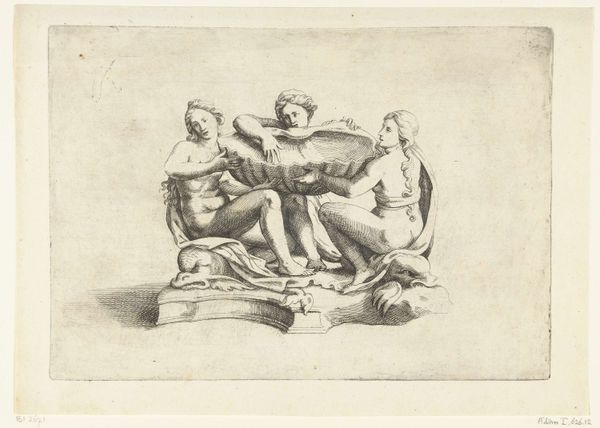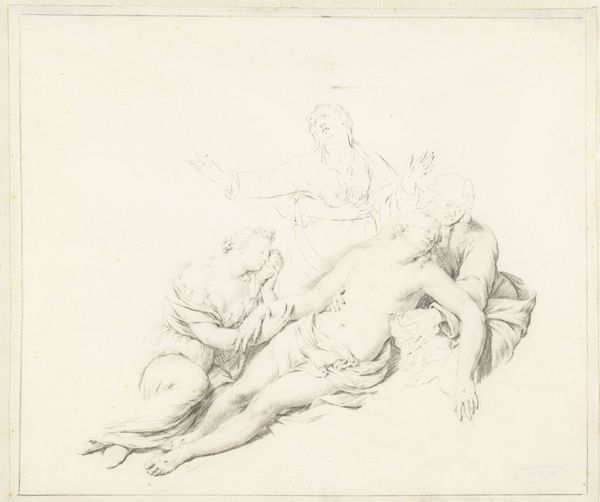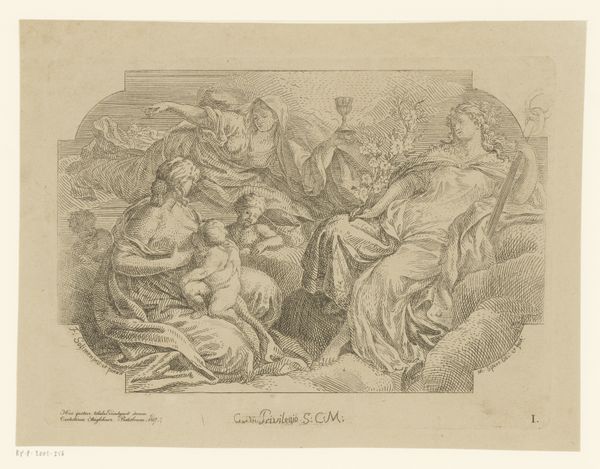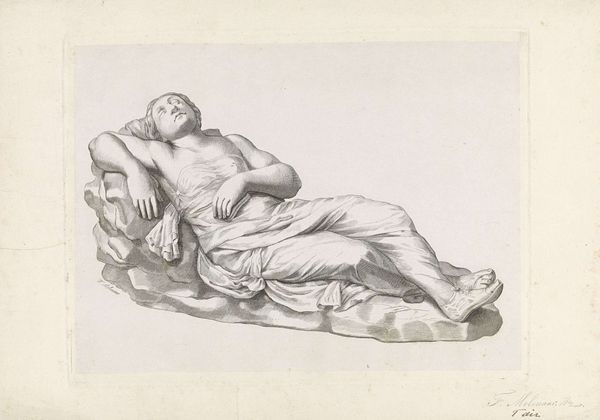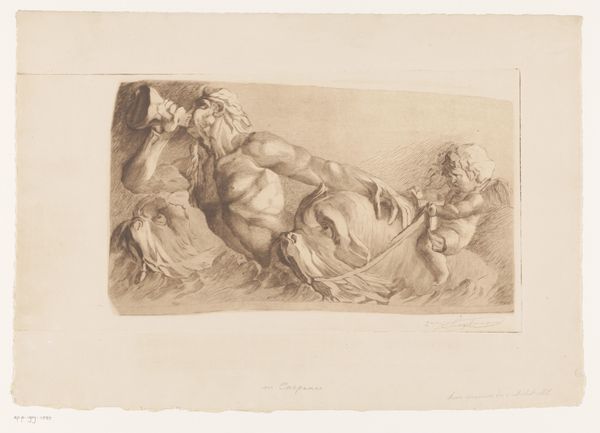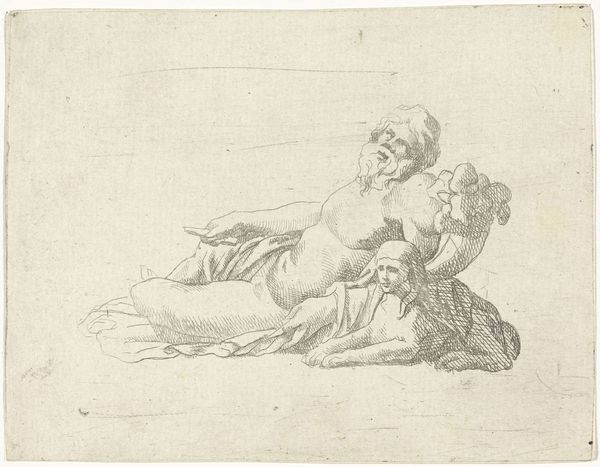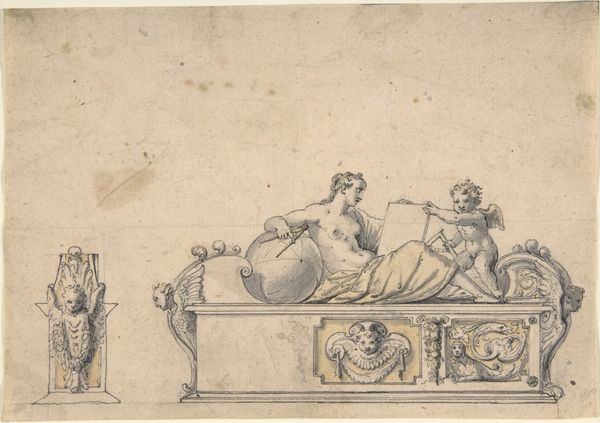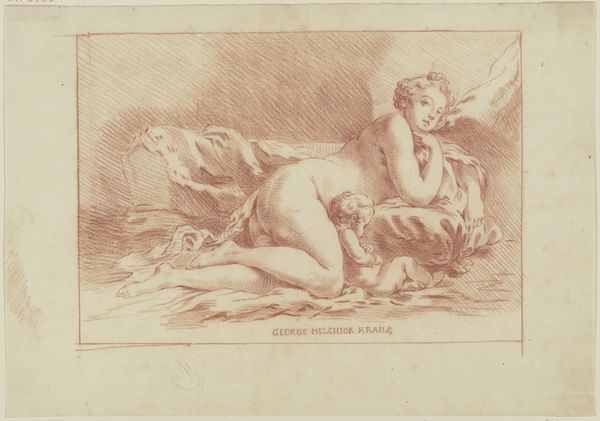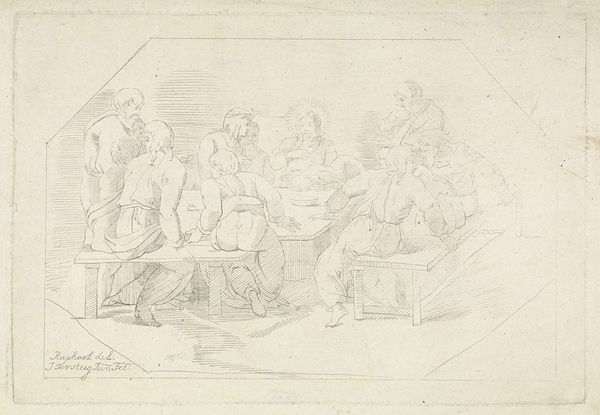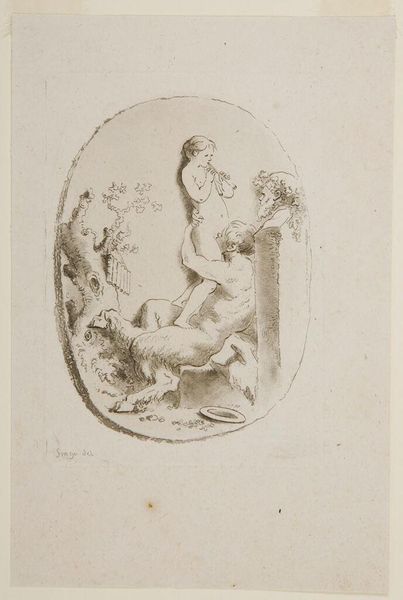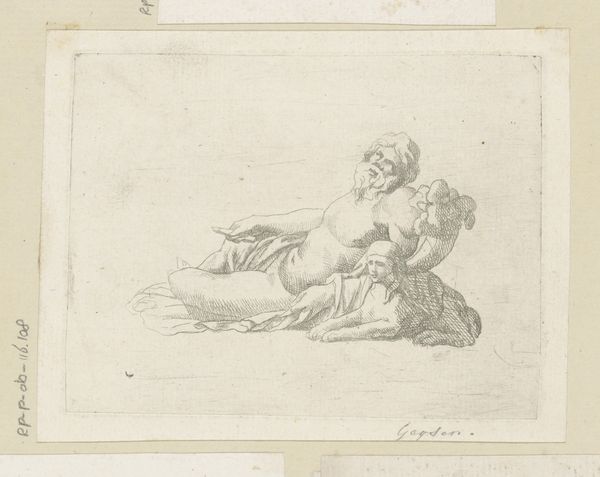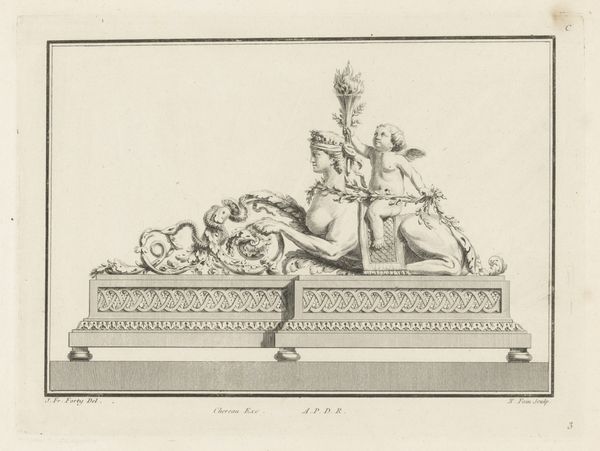
drawing, pencil
#
drawing
#
pencil
#
academic-art
#
nude
Dimensions: height 142 mm, width 180 mm
Copyright: Rijks Museum: Open Domain
Curator: What do you think of this pencil drawing of a sleeping child by Arnoud Schaepkens? It was made sometime between 1855 and 1904. Editor: There is an almost dreamlike quality to the hatching. The figure appears suspended, with subtle tonalities, which enhance its placid mood and contribute to the serene character. Curator: Well, the nude form of the child invites contemplation on innocence, of course, but to fully appreciate Schaepkens' choices, we have to look at how academic art training functioned. A nude drawing like this would serve to both demonstrate and hone the artist’s knowledge of anatomy, shading, and composition. These exercises reflected bourgeois aspirations—a revival of classical art. Editor: It is a careful study of the corporeal form that invites visual inspection. Note how he plays with shadow, and light on the flesh; it creates volume. And look at the classical couch and drapes, reinforcing the idealized theme. Curator: Right, and the reproductive quality of drawings means these could easily circulate in classrooms, studios, and even parlors, furthering and broadening this return to neoclassicism across Dutch society at the time. It would mean quite something to have a beautiful artwork available, created with readily-available, relatively cheap materials. Editor: The material reality becomes a vector for these forms across the Netherlands, like seeds on the wind, bringing them into our houses. What would you take away from our experience of this drawing, then? Curator: Perhaps this image brings us face-to-face with art and commerce intersecting in a tangible way; we can literally see the making of art. Editor: And I can admire, in these delicate lines, how a scene comes to life, capturing an innocent moment.
Comments
No comments
Be the first to comment and join the conversation on the ultimate creative platform.

